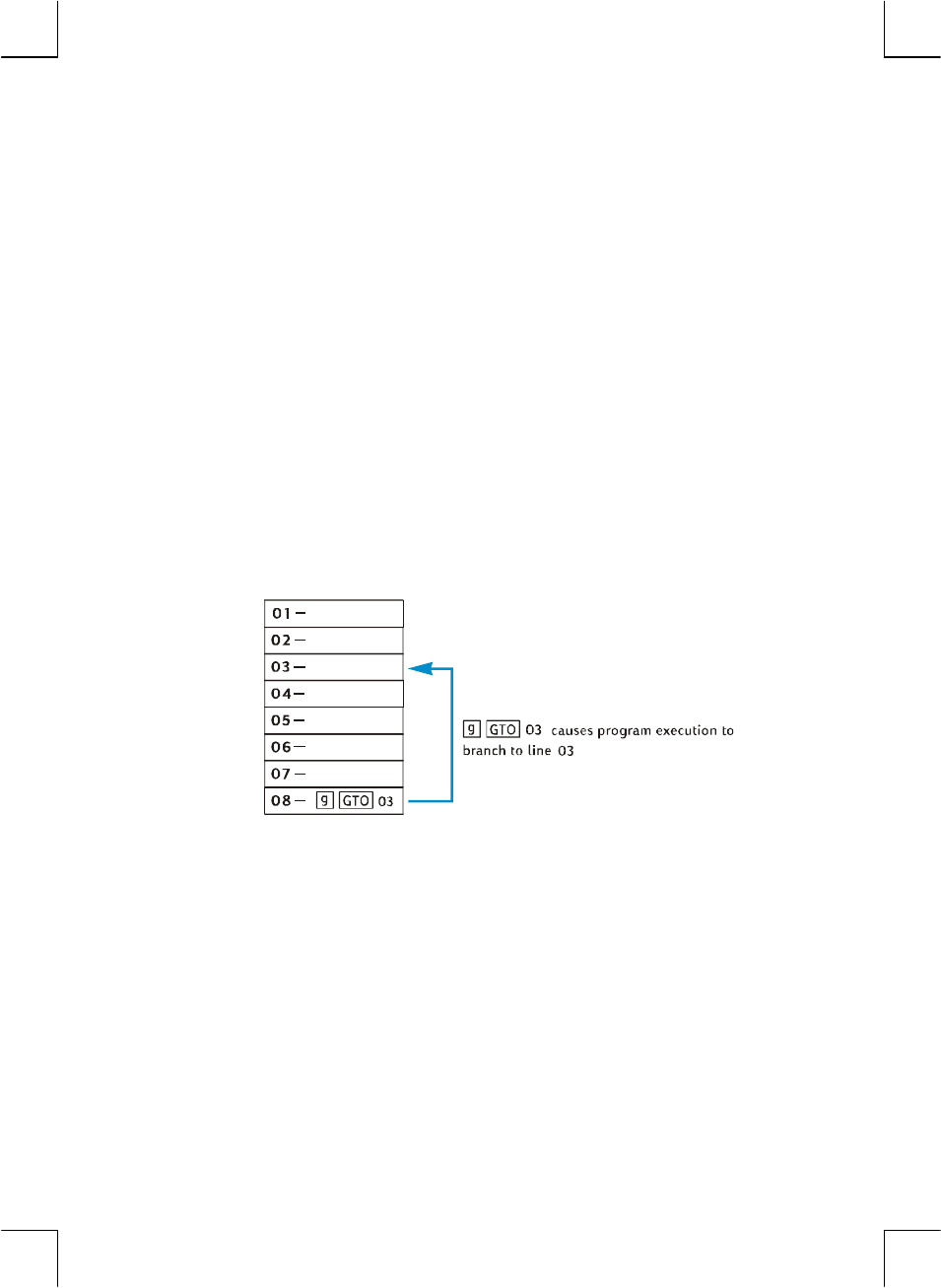
103
File name: hp 12c_user's guide_English_HDPMBF12E44 Page: 103 of 209
Printered Date: 2005/7/29 Dimension: 14.8 cm x 21 cm
Section 9
Branching and Looping
Although the instructions in a program normally are executed in order of their
program line numbers, in some situations it is desirable to have program execution
transfer or “branch” to a program line that is not the next line in program memory.
Branching also makes it possible to automatically execute portions of a program
more than once — a process called “looping.”
Simple Branching
The
i
(go to) instruction is used in a program to transfer execution to any
program line. The program line desired is specified by keying its two-digit line
number into the program line containing the
i
instruction. When the
i
instruction is executed, program execution branches or “goes to” the program line
specified and then continues sequentially as usual.
You have already seen a common use of branching: the
i
00 instruction (that is
stored in program memory after the program you key in) transfers execution to
program line 00. A
i
instruction can be used to branch not only backward in
program memory — as in the case of
i
00 and as illustrated above — but also
forward in program memory. Backward branching is typically done to create
loops (as described next); forward branching is typically done in conjunction with
an
o
or
m
instruction for conditional branching (as described afterward).


















